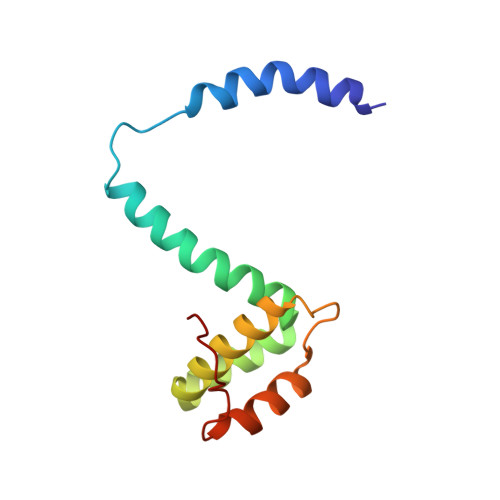Structure-function correlation of human programmed cell death 5 protein.
Yao, H., Xu, L., Feng, Y., Liu, D., Chen, Y., Wang, J.(2009) Arch Biochem Biophys 486: 141-149
- PubMed: 19358820
- DOI: https://doi.org/10.1016/j.abb.2009.03.018
- Primary Citation of Related Structures:
2K6B - PubMed Abstract:
Human programmed cell death 5 (PDCD5) is a translocatory protein playing an important role in the apoptotic process of cells. Although there are accumulated data about PDCD5 function, the correlation of the structure with the function of PDCD5 has not been investigated. Here, we report the studies of structure-function relationship of PDCD5 by multidimensional NMR methods and by FACScan flow cytometer and fluorescence microscope. The 3D structure of intact PDCD5 and the internal motions of PDCD5 have been determined. PDCD5 has a compact core structure of low flexibility with two mobile alpha-helices at N-terminal region and a flexible unstructured C-terminal region. The flow cytometry and internalization measurements of different PDCD5 fragments indicate that the charged residues are crucial for the ability of apoptosis-promoting and cell translocation of the protein. Combined analyses reveal a fact that the regions that seem to be most involved in the function also are more flexible in PDCD5.
Organizational Affiliation:
Institute of Biophysics, Chinese Academy of Sciences, Beijing, China.














